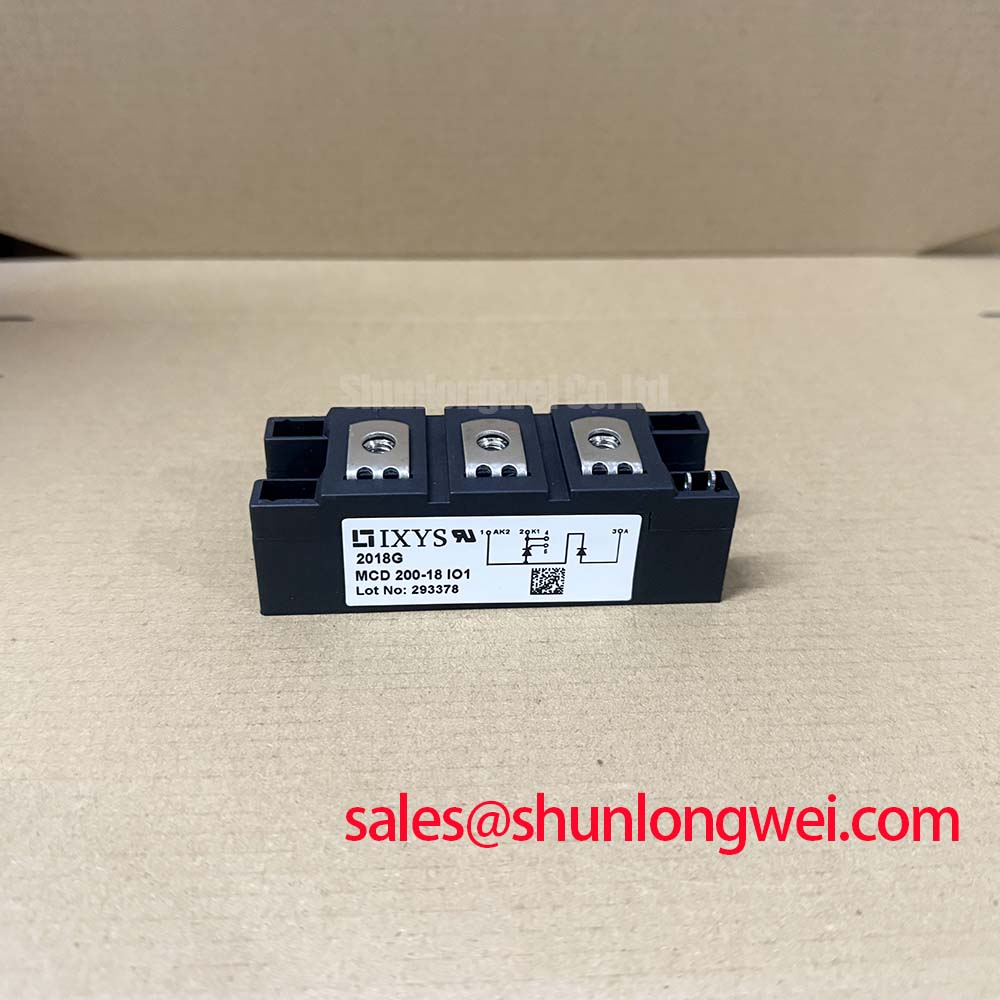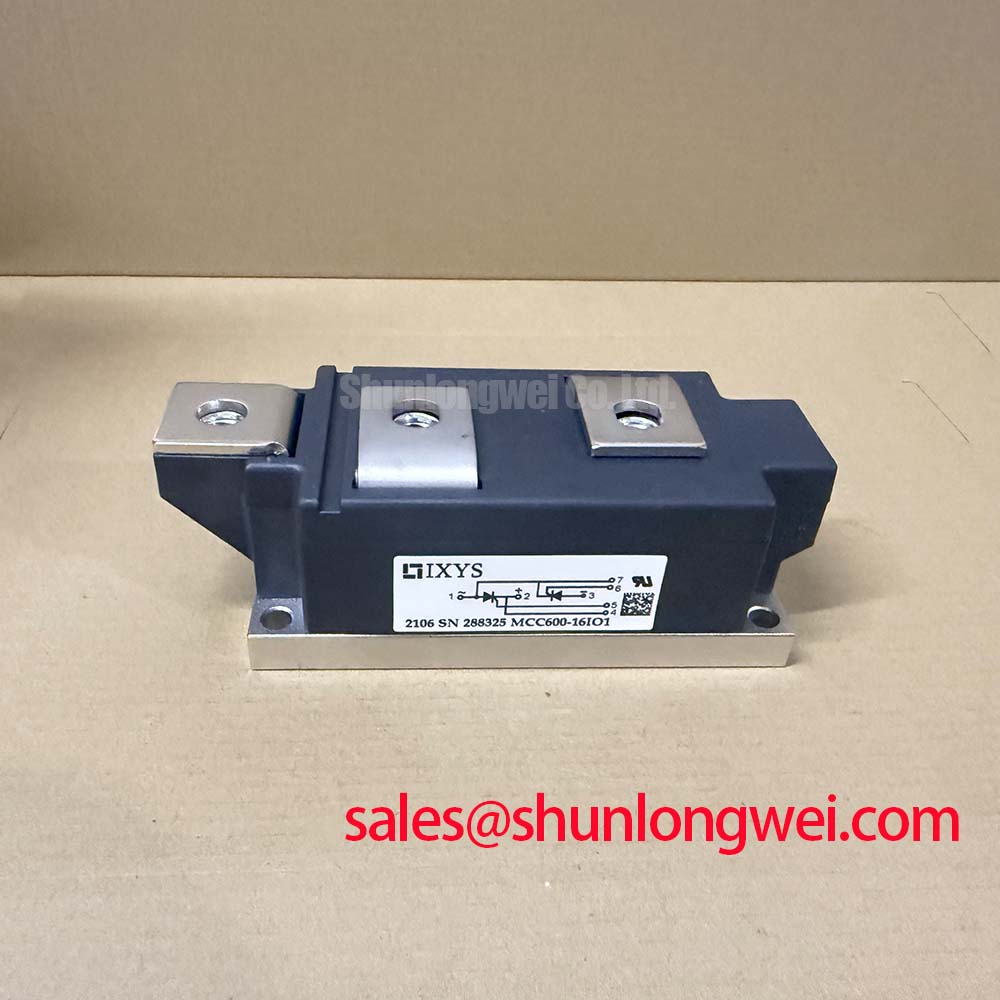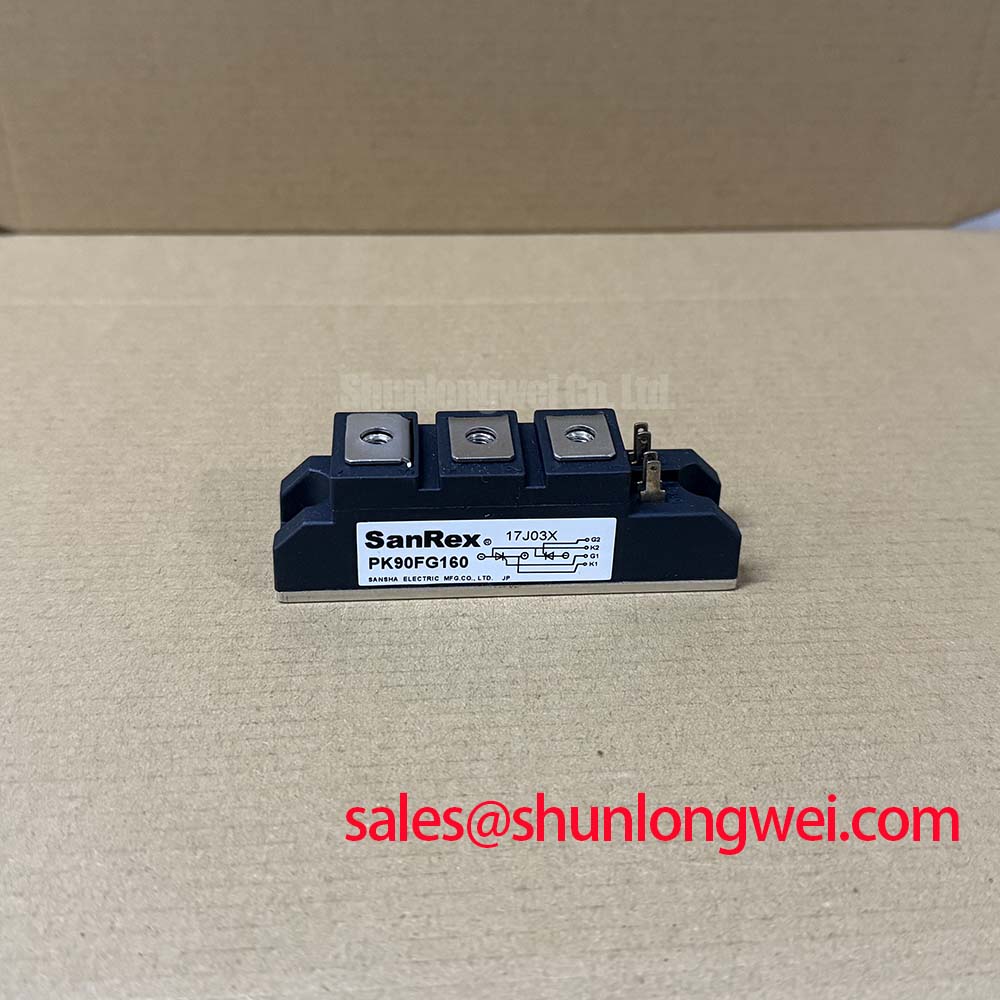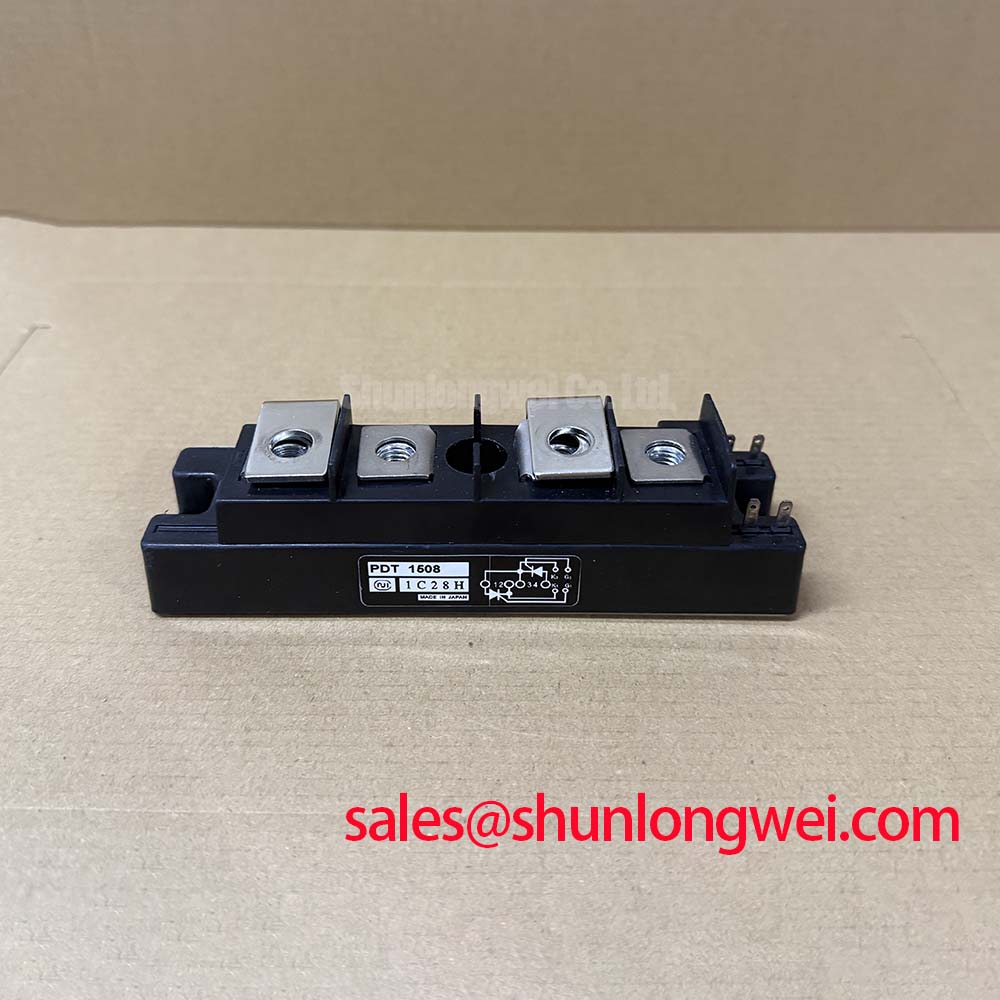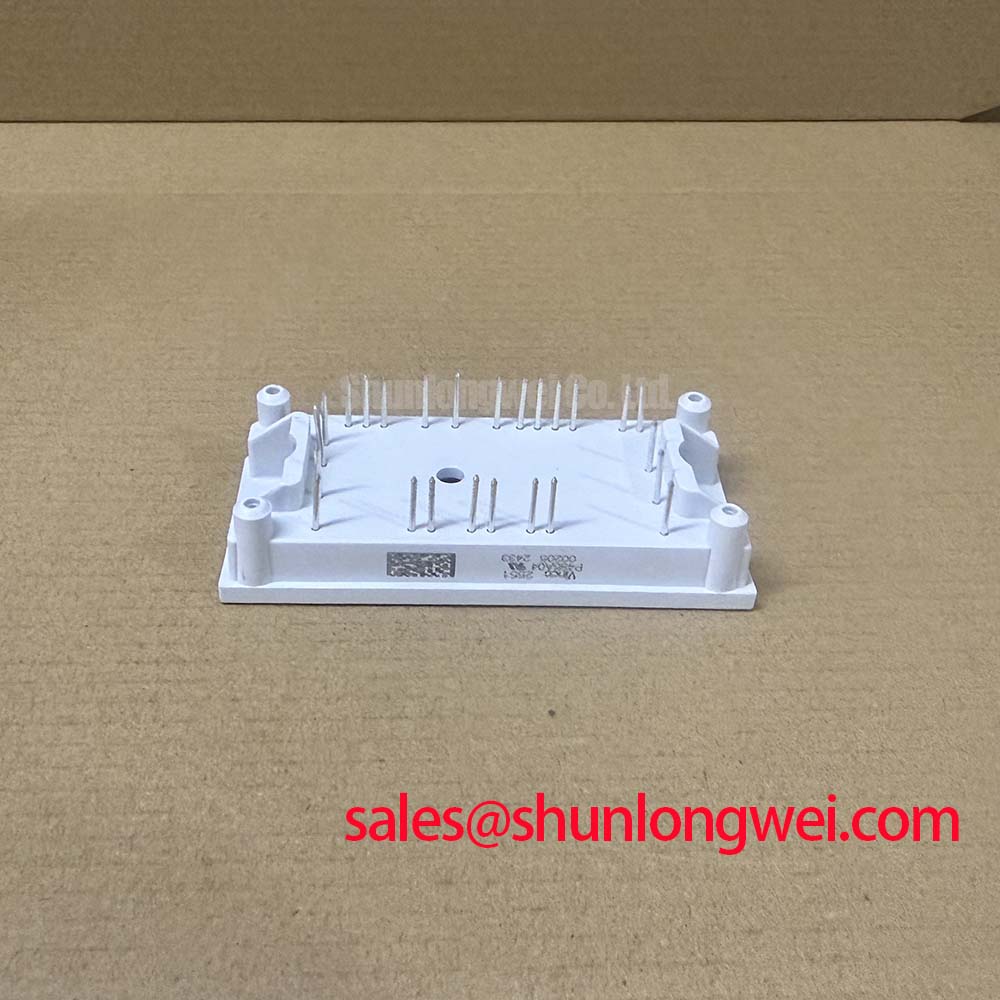MMF800Y020DK1: 200V Dual IGBT for High-Efficiency Inverters
Technical Overview of the MMF800Y020DK1 Dual IGBT Module
The MacMic MMF800Y020DK1 is a high-current dual IGBT module designed to minimize total power loss in demanding power conversion systems. This module leverages Trench Field Stop technology to achieve an exceptional balance between conduction and switching performance, a critical factor for engineers designing high-efficiency inverters and motor drives. What defines the MMF800Y020DK1's efficiency? Its low VCE(sat) of 1.95V minimizes conduction power losses. It provides a robust, thermally efficient building block for high-power applications requiring precise control and long-term operational integrity.
Top Specs: 200V | 800A | VCE(sat) 1.95V (typ)
Key Benefits: Reduced overall power loss. Excellent thermal transfer.
Deconstructing Switching Performance: A Technical Analysis
The core of the MMF800Y020DK1's design is the optimization of its dynamic and static characteristics. The module incorporates Trench Field Stop IGBT technology, which is instrumental in reducing the collector-emitter saturation voltage (VCE(sat)). A lower VCE(sat) directly translates to lower power dissipation during the on-state, a dominant loss factor in applications with high duty cycles. This focus on conduction efficiency does not come at a significant cost to switching speed. The module is co-packaged with a Fast Recovery Epitaxial Diode (FRED) that exhibits soft recovery characteristics, minimizing voltage overshoots and electromagnetic interference (EMI) during diode turn-off.
Furthermore, the module's internal layout is engineered for low stray inductance (LCE), specified at approximately 15 nH. This low internal inductance is crucial for mitigating voltage spikes during high-speed di/dt switching events, thereby enhancing the device's Safe Operating Area (SOA) and reducing the dependency on external snubber circuits. This combination of low conduction loss, controlled switching, and low internal inductance makes the MMF800Y020DK1 a well-balanced component for efficient power stage design.
Powering High-Frequency, High-Efficiency Systems
The MMF800Y020DK1 is engineered for deployment in high-power conversion systems where operational efficiency and thermal stability are paramount. Its high current handling and low loss profile make it a suitable candidate for a range of industrial applications.
- High-Power Motor Drives: In Variable Frequency Drives (VFDs) and servo systems, the module's low VCE(sat) reduces heat generation, allowing for more compact heatsink designs or higher output power from a given system footprint.
- Renewable Energy Inverters: For solar and wind power inverters, maximizing energy conversion efficiency is a primary design goal. The low total switching losses contribute to higher annual energy production.
- Uninterruptible Power Supplies (UPS): The module's robust short-circuit withstand time (10µs) and high current capability provide the reliability needed to support critical loads during power disturbances.
- Welding and Induction Heating: These applications involve high-frequency switching under heavy loads. The module's thermal performance and controlled switching characteristics are vital for ensuring long-term operational integrity.
For >100kW inverters operating below 10kHz, its 1.95V VCE(sat) makes the MMF800Y020DK1 an optimal choice for maximizing conduction efficiency. Designers can find more information on selecting the right IGBT in our guide on decoding IGBT datasheets.
Technical Inquiries on the MMF800Y020DK1
1. How does the Trench Field Stop technology in the MMF800Y020DK1 impact system design?
Trench Field Stop technology is key to achieving the module's low VCE(sat) of 1.95V (typ) and reduced switching losses. For designers, this means lower overall power dissipation, which can lead to smaller heatsinks, reduced cooling requirements, and ultimately a lower total cost of ownership and higher power density.
2. What is the significance of the 10µs short-circuit withstand time?
A short-circuit withstand time of 10 microseconds provides a critical safety margin. It allows the system's protection circuitry sufficient time to detect a fault condition and safely shut down the IGBT before catastrophic failure occurs. This level of robustness is essential in high-power industrial applications like motor drives, as detailed in our analysis of IGBT failure modes.
3. Can the MMF800Y020DK1 be paralleled for higher current applications?
Yes, IGBT modules like this one are often designed for paralleling. The positive temperature coefficient of VCE(sat) helps ensure thermal stability and balanced current sharing between paralleled modules. However, careful gate drive design and a symmetrical PCB layout are crucial for minimizing current imbalances during switching.
4. How should I interpret the thermal resistance (Rth(j-c)) value in my design?
The Rth(j-c) of 0.05 °C/W for the IGBT represents the thermal opposition from the semiconductor junction to the module's case. A lower value indicates more efficient heat transfer. This parameter is fundamental for calculating the junction temperature under specific load conditions to ensure it remains within safe operating limits.
5. What is the role of the integrated Fast Recovery Epitaxial Diode (FRED)?
The integrated FRED serves as the freewheeling diode. Its "soft" recovery characteristic is crucial for reducing voltage spikes and oscillations during turn-off. This minimizes electromagnetic interference (EMI) and reduces electrical stress on the IGBT, contributing to greater system reliability.
Critical Specifications for Low-Loss Design
The following table outlines key parameters of the MMF800Y020DK1, providing insight into their direct engineering impact. For a complete list of specifications, please download the datasheet.
| Parameter | Value | Engineering Meaning |
|---|---|---|
| Collector-Emitter Voltage (Vces) | 200 V | Defines the maximum blocking voltage capability of the device, providing the necessary margin for the target application's bus voltage. |
| Continuous Collector Current (Ic) @ Tc=80°C | 800 A | Specifies the maximum continuous current the module can handle at a case temperature of 80°C, a primary indicator of its power handling capacity. |
| Collector-Emitter Saturation Voltage (VCE(sat)) @ Ic=800A, Tj=125°C | 1.95 V (Typ.) / 2.45 V (Max.) | Indicates on-state voltage drop. The low typical value directly reduces conduction losses, improving overall system efficiency. |
| Turn-off Switching Loss (Eoff) @ Tj=125°C | 175 mJ (Typ.) | Quantifies the energy lost during the turn-off transition. A lower value is critical for efficiency in high-frequency applications. |
| Thermal Resistance, Junction-to-Case (Rth(j-c)) per IGBT | 0.05 °C/W (Max.) | This parameter acts like the diameter of a heat pipe; a lower resistance means heat can be extracted from the chip more effectively, simplifying thermal management. Understanding its impact is explored in our article on why thermal resistance matters. |
| Operating Junction Temperature (Tj op) | -40 to +150 °C | Defines the safe operating temperature range of the semiconductor, ensuring reliability across various industrial environments. |
The Efficiency Imperative in Modern Power Conversion
In today's industrial landscape, efficiency is not just a performance metric; it is a strategic necessity. Rising energy costs and stringent environmental regulations compel designers to minimize every watt of power loss. The MMF800Y020DK1 directly addresses this need. By providing a low VCE(sat) without excessively compromising switching speed, it enables the creation of power conversion systems that meet modern efficiency standards like IE3/IE4 for motors. This focus on loss reduction contributes to a lower total cost of ownership (TCO) for the end equipment, a persuasive value proposition in competitive markets from industrial automation to renewable energy.
Data-Informed Component Evaluation
When evaluating high-current IGBT modules, engineers must consider the specific demands of their application. The MMF800Y020DK1 provides a data-centric foundation for this analysis. The decision-making process often involves balancing various electrical and thermal parameters to achieve the desired system performance.
For systems that require operation on higher voltage buses, a module like the CM600DX-24T, with its 1200V rating, would be a more appropriate component for evaluation. Conversely, for applications with similar current but higher voltage requirements, the 1200V PM800HSA120 offers an alternative set of parameters for consideration. Presenting these options allows for a thorough, data-driven selection process based on the unique technical requirements of the end system.
Illustrative Deployment Scenarios
To conceptualize the MMF800Y020DK1's utility, consider its implementation in a 150 kW central solar inverter. In this context, the module's low conduction losses are highly beneficial due to the relatively low switching frequencies (typically 4-8 kHz) used. The reduced heat dissipation simplifies the inverter's cooling system, which could be a forced-air or liquid-cooled design, thereby increasing the system's overall reliability and availability. The module's robust thermal cycling capability, facilitated by its Al2O3 DBC (Direct Bonded Copper) substrate, ensures it can withstand the daily temperature fluctuations inherent in solar power generation, contributing to a longer operational lifetime.
Future-Proofing Your Power Stage Design
Selecting a power module like the MMF800Y020DK1 is a forward-looking decision. Its blend of efficiency and thermal performance provides engineers with the flexibility to meet today's performance targets while leaving headroom for future system enhancements. As switching frequencies in some applications trend higher, a well-balanced module that manages both conduction and switching losses effectively offers a more versatile platform. By starting with a component that excels at thermal transfer and has minimized static losses, designers can focus on optimizing other aspects of the system, such as gate drive circuitry and control algorithms, to unlock even greater levels of performance and reliability.









